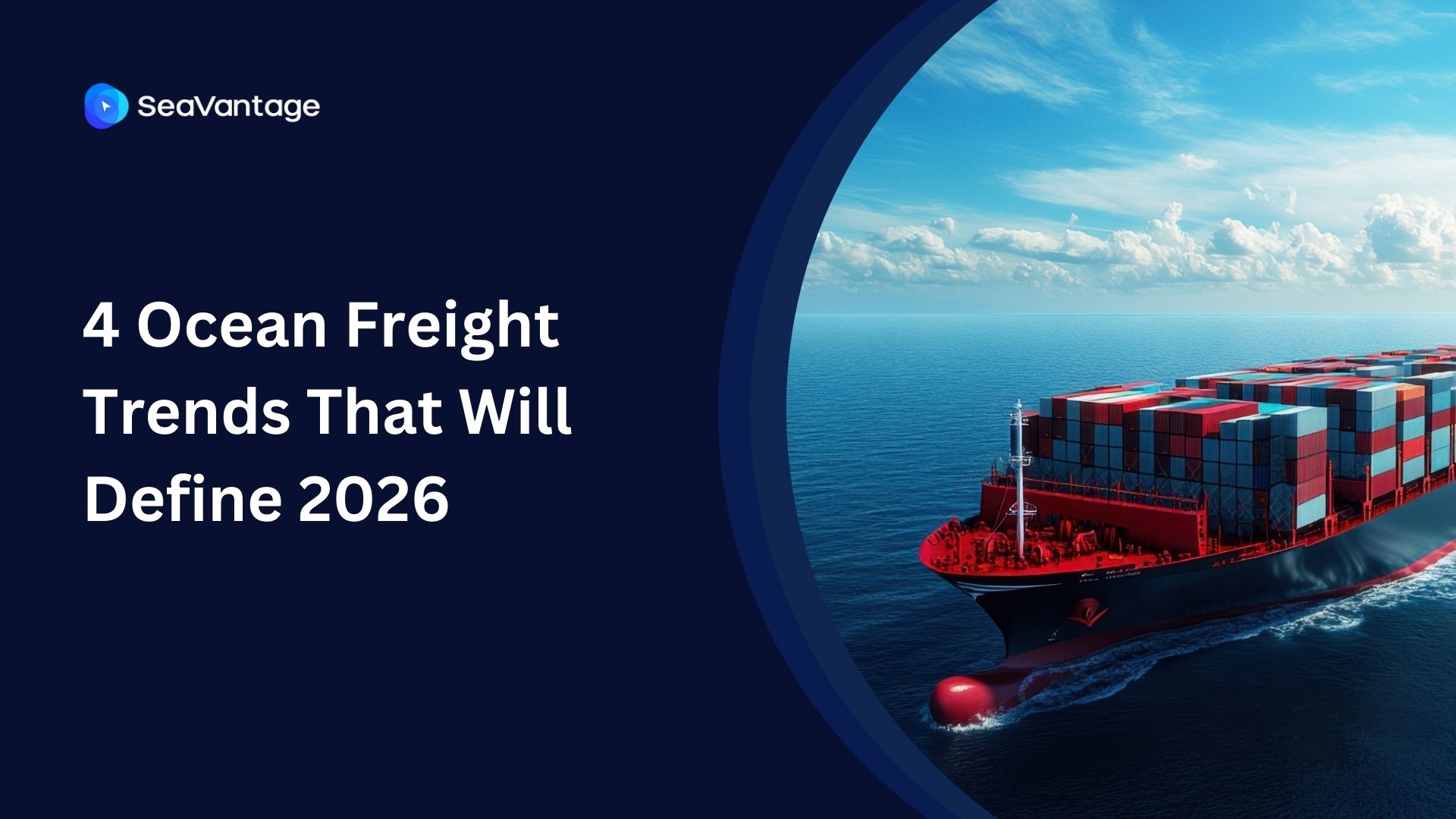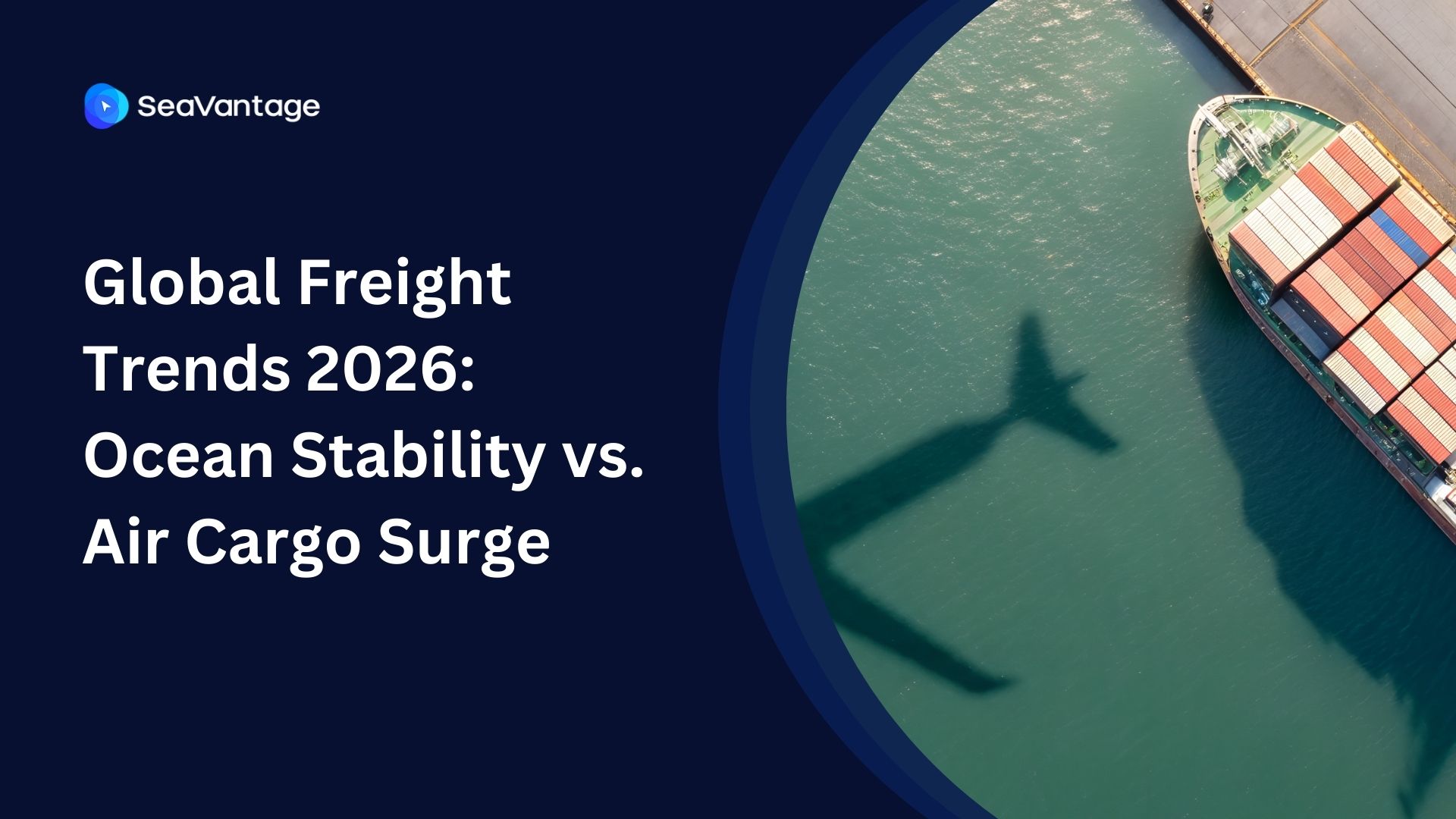Never Lose Another Shipment: The Live Container Tracking Advantage
.jpg)
Why Loss and Damage Happen in Shipping
Shipping is full of surprises, and not all of them are good. Containers can get lost, damaged, or even stolen. Sometimes it's rough weather, other times it's accidents during loading, or sadly, theft. Whatever the reason, it means lost money, delayed deliveries, and unhappy customers. It's the stuff logistics nightmares are made of.
Luckily, live container tracking can help you avoid most of these headaches. By knowing exactly where your cargo is, you can always reduce risks and solve problems before they escalate. Live tracking gives you real-time visibility, letting you stay one step ahead of potential issues.
How Live Tracking Protects Your Cargo
Real-Time Alerts That Keep You Informed
Imagine getting an alert on your phone the second your container takes an unexpected detour. Live container tracking lets you do exactly that. If your shipment goes off course or stops unexpectedly, you'll know about it immediately. No more guessing games or stressful phone calls trying to find out where your cargo went.
These real-time notifications don't just display where your container is—they help you protect it. If something appears to be suspicious, you can quickly reach out to the carrier or notify security. Think of it as a watchdog on your shipments, keeping them safe from theft or accidents.
Keeping Cargo Safe from the Elements
Not all damage is caused by accidents or theft. Sometimes, it's the environment itself that poses the biggest threat. If you're shipping perishable goods like food or sensitive items like electronics, extreme temperatures or humidity can ruin them.
Live container tracking systems now come with smart sensors that monitor:
- Temperature fluctuations
- Humidity levels
- Shock impacts
If something is amiss—e.g., the temperature getting too high—you get an instant alert. This means you can take measures before your cargo is damaged. It's like having a safety net for your goods, ensuring they arrive in perfect condition.
Protecting Containers During Transport
Containers go through a lot on their journey. They're loaded, unloaded, stacked, and moved from one vehicle to another. This rough handling can result in dents, scratches, and even serious damage. Live container tracking systems help by monitoring movement and impact. If a container is handled roughly or bumped too hard, you'll receive a notification.
This isn't just about reacting to damage—it's about learning from it. By analyzing the data, you can see where and when damage happens most often. This allows you to:
- Choose better carriers
- Improve packaging methods
- Adjust handling procedures
The main goal? Preventing damage before it even occurs.
Advanced Security Features
Stopping Theft with Geofencing
One of the most remarkable features of live container tracking is geofencing. It lets you set digital boundaries around your container's route. If the container leaves this designated area, you get an alert immediately. It's like putting an invisible fence around your shipment.
This is especially useful in areas known for cargo theft. If a container goes off course, you can:
- Track its location in real time
- Contact transportation partners immediately
- Alert security personnel if necessary
- Provide authorities with precise location data
Geofencing helps you stop theft before it happens, giving you peace of mind that your cargo is safe.
Saving Money on Insurance
Insurance for cargo isn't cheap, mainly because of the risks involved. But when you use live container tracking, you actually lower those risks—and your insurance costs. Insurers love it when they see you're using advanced tracking technology because it means fewer claims.
Real-time data on your container's location, condition, and security reduces the chances of loss or damage. Insurance companies see this as a lower risk, which translates to lower premiums for you. You're not just protecting your cargo—you're saving money too.
Real-World Success Stories
Live container tracking isn't just a theory—it has real-life applications:
Electronics Importer Case Study: A small electronics importer who used to lose shipments to theft implemented live tracking with geofencing and saw a 50% drop in stolen cargo.
Food Distributor Example: A food distributor struggled with spoiled products because of temperature changes during shipping. After implementing live tracking sensors to monitor temperatures in real time, they receive immediate alerts when conditions change. This has saved them thousands of dollars in lost inventory.
Choosing the Right Tracking Solution
Not all live container tracking systems are the same. Some come with all the bells and whistles—real-time alerts, geofencing, environmental sensors—while others are more basic. The trick is to find one that fits your needs and budget.
Key Factors to Consider:
- Ease of Use Look for a solution that's intuitive and doesn't require extensive training
- Integration Capabilities Ensure it works with your existing logistics and management systems
- Security Features Prioritize solutions with real-time alerts and tamper-proof sensors
- Reporting Tools Choose systems that provide detailed analytics and actionable insights
- Cost vs. Functionality Find the right balance between features and budget constraints
It's about finding the right balance between cost and functionality for your specific shipping needs.
Why Live Container Tracking is a Must-Have
Live container tracking isn't just a nice-to-have anymore—it's a must-have. It protects your cargo, saves you money on insurance, and helps you avoid costly delays. From real-time alerts and geofencing to environmental monitoring, it covers all the bases.
With the way global shipping is evolving, you can't afford to take chances with your cargo. Live tracking keeps you in control, from the moment your shipment leaves the warehouse to the second it arrives at its destination. It's about making sure your cargo arrives safe, sound, and on time.
Final Thoughts
The days of shipping containers disappearing without a trace are over. With live container tracking, you get:
- Real-time visibility into your shipments
- Enhanced security through geofencing and alerts
- Environmental protection for sensitive cargo
- Valuable data to improve shipping processes
- Peace of mind throughout the shipping journey
It doesn't matter if you're shipping high-value electronics or perishable foods—this technology keeps your cargo safe.
So why wait? Embrace live container tracking today and keep your shipments secure, your customers happy, and your business growing. It's the smart choice for modern logistics.
2025년 9월, 주요 글로벌 항만에서 어떤 운송사가 가장 긴 선박 체류 시간을 기록했는지 확인해보세요. 트렌드를 비교하고, 지연을 파악하며, 전체 항만 데이터를 통해 운송 전략을 최적화할 수 있습니다.
2025년 8월, 주요 글로벌 항만에서 어떤 운송사가 가장 긴 선박 체류 시간을 기록했는지 확인해보세요. 트렌드를 비교하고, 지연을 파악하며, 전체 항만 데이터를 통해 운송 전략을 최적화할 수 있습니다.
2025년 7월, 주요 글로벌 항만에서 어떤 운송사가 가장 긴 선박 체류 시간을 기록했는지 확인해보세요. 트렌드를 비교하고, 지연을 파악하며, 전체 항만 데이터를 통해 운송 전략을 최적화할 수 있습니다.
iscover the 4 critical ocean freight trends for 2026, from the Red Sea reopening and fleet overcapacity to shifting global trade maps. Prepare your supply chain now.
Discover key 2026 freight market trends: Port of Houston expansion, air cargo "super peak," and ocean freight stability. Plan your supply chain with SeaVantage.
Explore November 2025 global port dwell time data. See which ports and carriers led in efficiency across Antwerp, Busan, Long Beach, Rotterdam, and Singapore.



.svg)





.jpg)

.png)